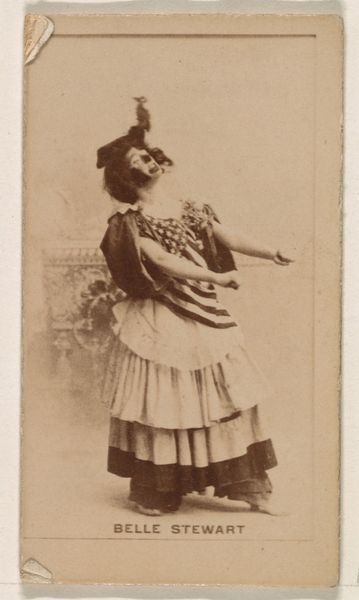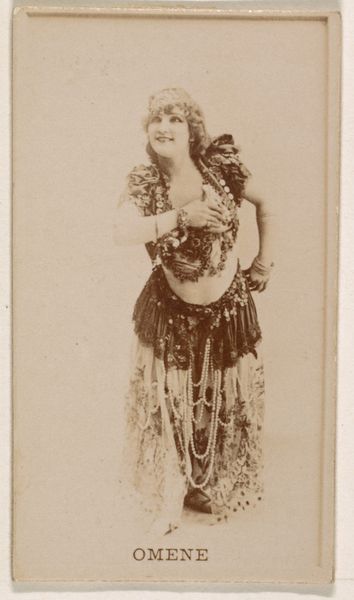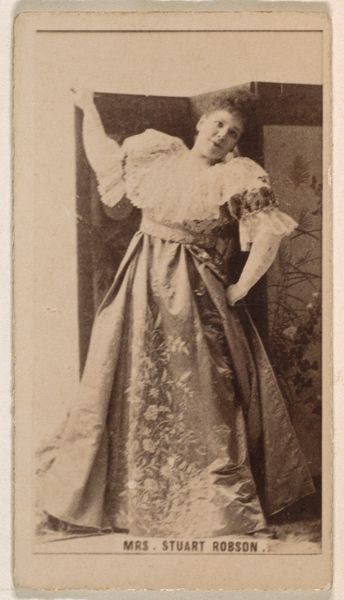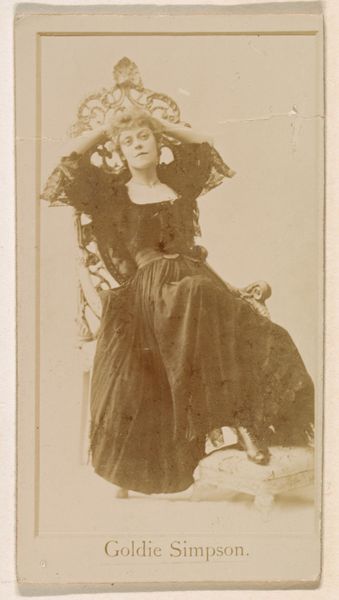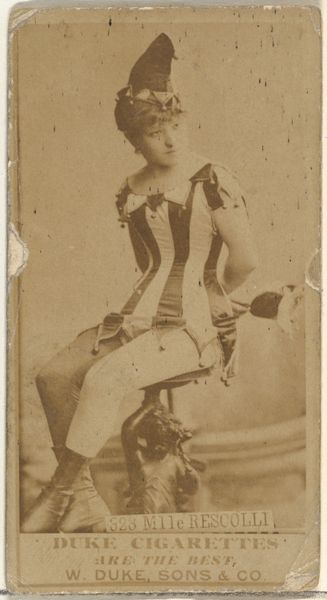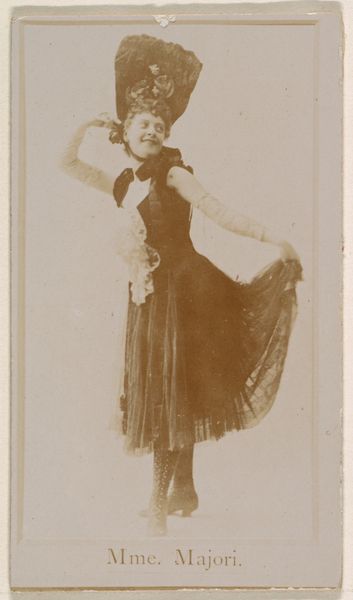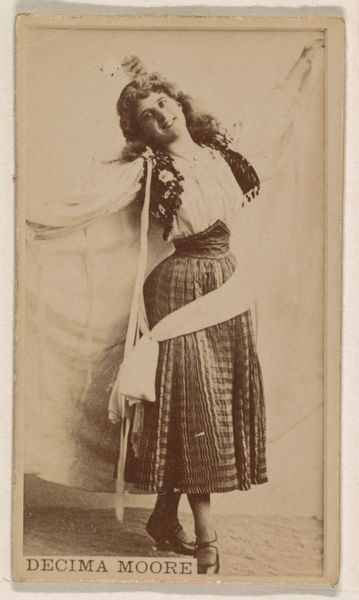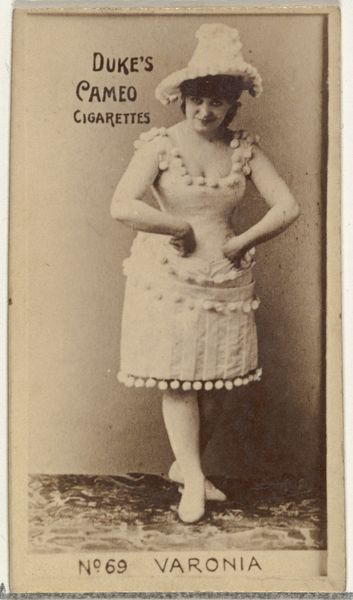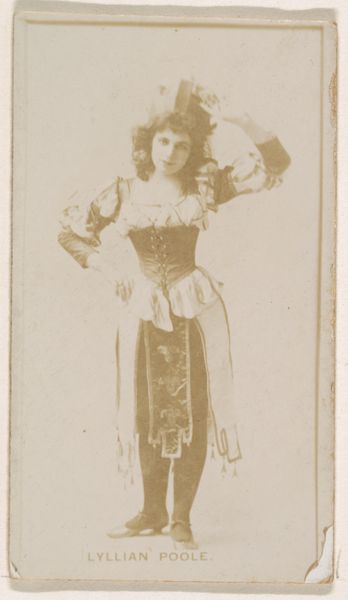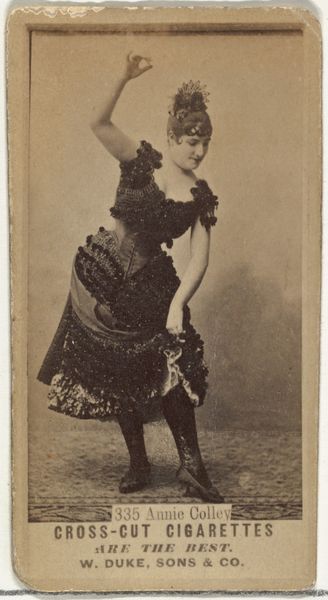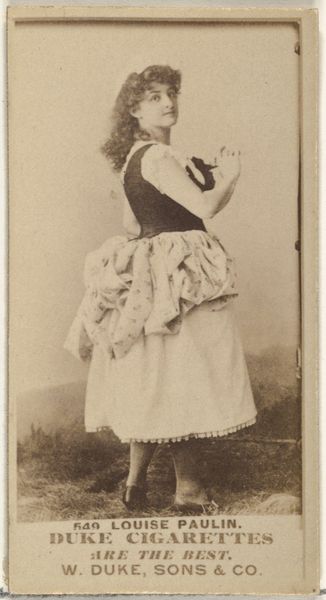
Edith Pallisser, from the Actresses series (N245) issued by Kinney Brothers to promote Sweet Caporal Cigarettes 1890
0:00
0:00
drawing, print, photography
#
portrait
#
drawing
# print
#
photography
#
genre-painting
Dimensions: Sheet: 2 1/2 × 1 7/16 in. (6.4 × 3.7 cm)
Copyright: Public Domain
Curator: Looking at this print from 1890, it depicts Edith Pallisser, an actress, part of a series of trade cards created by Kinney Brothers to promote their Sweet Caporal Cigarettes. It's currently housed at the Metropolitan Museum of Art. Editor: My first impression is how performative the image feels. Pallisser's pose is so staged, almost exaggerated, but the sepia tone lends it an old-world charm. It also feels somewhat impersonal, probably owing to the means of reproduction. Curator: Exactly. The image speaks to a larger trend in the late 19th century: the commodification of female performers. Kinney Brothers used Pallisser's image to sell cigarettes, capitalizing on her celebrity and sexualizing her within that patriarchal structure. How are women being used to move product? That's the relevant question here. Editor: That said, I find it quite interesting how the portrait uses photography and printing in a cost effective way, effectively blurring the lines between art, labor, and advertising. Curator: The fact that the card was a free insert, or rather "added value", reveals assumptions of leisure and disposable income—but also exploitation of women’s labor and visibility. Editor: It’s remarkable how photography became this industrialized medium; imagine the thousands of these cards that Kinney Brothers produced! How dependent cigarette sales were on creating stars—even the means by which Palliser herself rose in prominence had a material, measurable value. Curator: Agreed. Moreover, the portrait becomes a tool for constructing and reinforcing prevailing standards of beauty and femininity. It says as much about Kinney Bros' business strategies as it does about societal biases towards women. Editor: Well, analyzing this artifact from both angles highlights a complex relationship between material culture, celebrity, labor practices and societal issues that characterized the era. I wonder what Palliser made of it? Curator: In any event, approaching a portrait from a feminist materialist point of view forces us to challenge these traditions and bring broader cultural questions into our analysis. Editor: Absolutely, viewing Pallisser's image through the lens of labor helps us reassess our understanding of consumer culture today and reminds us that behind every polished image is a web of creation and consumption.
Comments
No comments
Be the first to comment and join the conversation on the ultimate creative platform.
